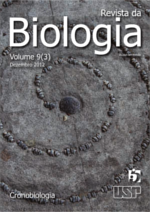Population rhythms: the case of stingless bee colonies
DOI:
https://doi.org/10.7594/revbio.09.03.10Keywords:
Internal temporal order, Meliponini, stingless bees, super-organismAbstract
Stingless bees are eusocial hymenopteran and the colony is the biological unit of the species. Different castes (queen, drones and workers) are present in the colony that may be considered a superorganism since isolated individuals do not survive. The colony shows a spatial organization, given by its architecture, characteristic of each species, and a temporal organization, established by sequences of processes and behaviours repeated at regular intervals, equally species-specific. In the same colony several rhythms can be detected both in individuals and in the colony altogether. The properties of these rhythms may be different but phase relations are established among them, originating a general rhythmic expression, consequence of the internal temporal order of the colony. As is the case with metazoan organisms, the establishment of the internal temporal order assures the super-organism survivalDownloads
Downloads
Published
2018-04-23
Issue
Section
Revisão
License
We ensure that our journal does not retain any copyright and that these are exclusive of the author(s) of the text. In that sense, we intend to break any restrictions to the published material and to achieve more intensely our goal of communicating science.
How to Cite
Gonçalves, R. C., & Marques, M. D. (2018). Population rhythms: the case of stingless bee colonies. Revista Da Biologia, 9(3), 53-57. https://doi.org/10.7594/revbio.09.03.10






